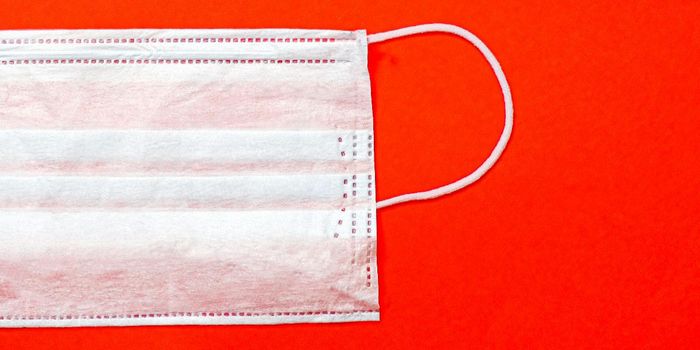The genetic cause of Duchenne muscular dystrophy has been known for nearly 30 years. Progress on finding an effective treatment has been painstakingly slow. Now, researchers have finally taken a significant step towards a cure.
Duchenne muscular dystrophy is the most common and severe form of muscular dystrophy among boys. Most patients are wheelchair-bound by age 10 and don't live beyond their 20s or early 30s. The disorder breaks down muscle fibers and replaces them with fibrous or fatty tissue. This causes progressive muscle degeneration and weakness.
The condition is genetic and, in most cases, hereditary. Almost all types of muscular dystrophy arise from single-gene mutations. Gene therapy has emerged as a promising approach because it involves altering genes within the body’s cells to stop the disease.
New research shows scientists have found a way to permanently stop the progression of Duchenne muscular dystrophy in mice. The researchers used the gene-editing technique CRISPR to correct the Duchenne muscular dystrophy mutation that causes the disease.
CRISPR-Cas9 can target any piece of DNA to remove or insert genetic segments into it with unprecedented precision.
In theory, the technique could be used to fix or improve a defective gene by replacing a faulty DNA segment with a non-faulty DNA segment (or, in this case, removing the faulty section altogether).
People with Duchenne muscular dystrophy are unable to produce the protein dystrophin. Dystrophin helps keep muscle cells intact by binding the inside of a muscle fiber to its surrounding support structure.
The dystrophin gene handles the protein’s production inside the cell. It is one of the longest human genes known and covers 0.08 percent of the human genome. The gene is made up of 79 sections called exons. If any of the exons have a debilitating mutation, the chain won’t be built and the protein won’t be produced. However, if a small number of exons in the middle are lost, as long as the two ends are intact, the protein will be produced.
This is what happens in the less severe condition Becker muscular dystrophy. Becker muscular dystrophy primarily affects voluntary muscle. It is characterized by progressive muscle weakness in the legs and pelvis. Thus, the protein would work reasonably well, but wouldn’t be perfect.
Three research groups worked independently of each other to prove the finding.
The groups each used the CRISPR-Cas9 technique to treat mice with a faulty dystrophin gene. They packaged the adaptive gene editing system into the nonpathogenic virus AAV9 and infected the mice's muscle cells with it. The researchers used CRISPR-Cas9 to cut out the defective exon within the gene. Without the exon, the cells created a shortened, yet functional, dystrophin protein.

Scientists had to find a virus type that could deliver CRISPR. Many early virus types they tried did not work, for reasons such as not being able to integrate into the genome. Adeno-associated virus (AAV) is nonpathogenic. Many people are exposed to it anyway and it's exceptionally effective at getting into cells.
In order to use AAV for gene therapy, the scientists had to take all the harmful and replicative genes out of it. They then had to insert the therapeutic genes into the virus. Unfortunately, the therapeutic genes simply didn't fit well. "AAV is a really small virus and CRISPR is relatively large," said Charles A. Gersbach, who led the team at Duke University.
The solution came from Feng Zhang, a member of Gersbach's team. In the natural bacterial immune system, CRISPR identifies the target DNA and Cas9 slices the strands. Researchers generally use the Cas9 protein that comes from the bacterial species Streptococcus pyogenes. Zhang discovered a much smaller Cas9 protein that comes from the species Staphylococcus aureus.
"There is still a significant amount of work to do to translate this to a human therapy and demonstrate safety," Gersbach said. "But these results coming from our first experiments are very exciting. From here, we'll be optimizing the delivery system, evaluating the approach in more severe models of DMD, and assessing efficiency and safety in larger animals with the eventual goal of getting into clinical trials.”
Another team, led by Amy J. Wagers of Harvard University, examined whether the AAV could infect the stem cells that generate new muscle cells. Stem cells are able to divide and renew themselves for long periods. By inserting the virus into a patient's muscle stem cells, she could produce a more permanent result than inserting it into an ordinary muscle cell.
The team at the University of Texas Southwestern Medical Center is currently working to apply the gene editing technique to cells directly from Duchenne muscular dystrophy patients. The group, led by Eric N. Olson, is additionally working to apply the technique in large preclinical animal models.
All of the teams have filed for patents. Their studies were published in the journal
Science on December 31, 2015.
Source:
Press release via
UT Southwestern Medical Center,
press release via
Duke University and
EurekAlert!,
Duke University team journal study,
UT Southwestern Medical Center team journal study,
Harvard University team journal study,
New York Times

 Scientists had to find a virus type that could deliver CRISPR. Many early virus types they tried did not work, for reasons such as not being able to integrate into the genome. Adeno-associated virus (AAV) is nonpathogenic. Many people are exposed to it anyway and it's exceptionally effective at getting into cells.
Scientists had to find a virus type that could deliver CRISPR. Many early virus types they tried did not work, for reasons such as not being able to integrate into the genome. Adeno-associated virus (AAV) is nonpathogenic. Many people are exposed to it anyway and it's exceptionally effective at getting into cells. 







